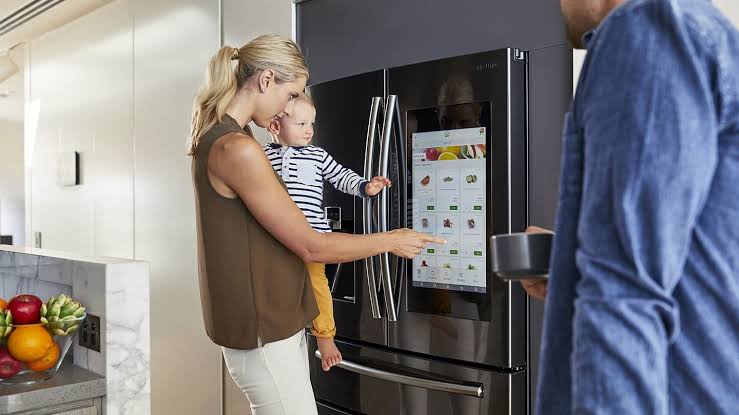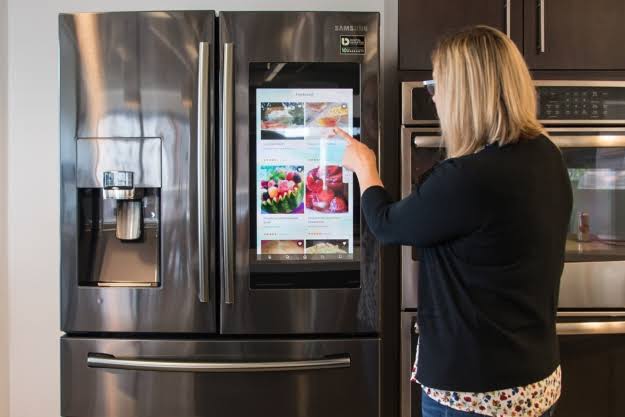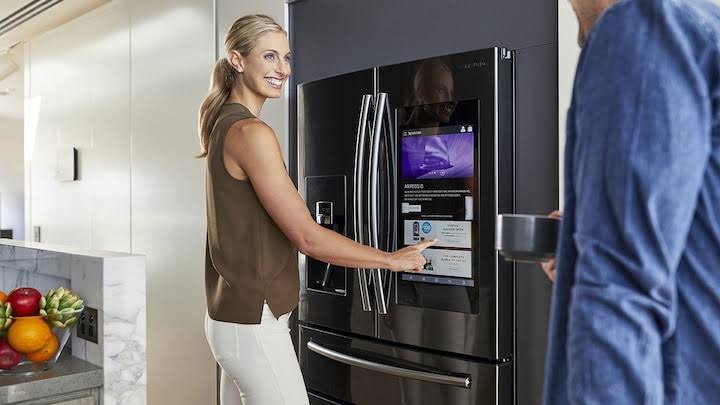Electronics/Gadgets
How To Reset Samsung Fridge: A Step-by-Step Guide

Is your Samsung fridge acting up? Don’t worry, we’re here to help! In this easy-to-follow guide, we’ll be looking at how to reset samsung fridge. Whether you’re experiencing temperature issues, unresponsive controls, or any other problem, a simple reset might just do the trick. So, let’s scroll down and get your fridge back up and running smoothly!
Before we jump into the steps, let’s briefly understand why resetting your Samsung fridge can be beneficial. Over time, electronic devices can experience glitches or temporary errors, causing them to malfunction. Resetting your fridge essentially refreshes its system, clearing any temporary issues that might be causing problems.
Preparing for the Reset

1. Locate the Power Cord
Begin by finding the power cord of your Samsung fridge. It’s typically located at the back, near the bottom. If needed, move the fridge away from the wall for easy access.
2. Unplug the Fridge
Once you’ve found the power cord, gently unplug it from the electrical outlet. Make sure you have a clear view of the power cord throughout the reset process.
Performing the Reset

1. Wait for a Few Minutes
After unplugging the fridge, allow it to rest for about five minutes. This waiting period ensures that any residual power is drained from the refrigerator’s system.
2. Plug It Back In
After the waiting period, plug the power cord back into the electrical outlet firmly. Ensure the connection is secure to avoid any loose connections.
3. Power On the Fridge
Locate the power button or switch on your Samsung fridge. Press the button or flip the switch to power on the refrigerator. You should see the lights and control panel come to life.
4. Give It Time to Restart
Once the fridge is powered on, give it a few minutes to restart completely. During this time, the fridge will go through its startup process, and you might hear the compressor and fans kick in.
5. Set the Desired Temperature
After the restart, check the control panel or temperature settings. Make sure the fridge is set to the desired temperature, usually around 37°F (3°C), and the freezer around 0°F (-18°C). Adjust the settings if necessary.
READ MORE: A Windows User Is Locked Out Of Her Computer, What To Do?
Post-Reset Tips and Troubleshooting
1. Resetting Ice Maker (If Applicable)
If your Samsung fridge has an ice maker, it may require a separate reset. Refer to your fridge’s user manual for specific instructions on resetting the ice maker if needed.
2. Observe for Changes
After performing the reset, keep a close eye on your fridge for the next few hours. Monitor the temperature, listen for any unusual noises, and ensure that the fridge is cooling properly. If you notice any persisting issues, consider reaching out to Samsung customer support or a qualified technician.

Conclusion
Congratulations! You’ve successfully reset your Samsung fridge and resolved any temporary issues it might have been facing. Remember, a reset is a simple yet powerful troubleshooting step that can save you time and money. By following this step-by-step guide on how to reset samsung fridge, you can quickly get your fridge back to its optimal working condition.
If you encounter any further issues or have specific concerns, don’t hesitate to seek assistance from Samsung’s support team or a professional technician.
Frequently Asked Questions
How often should I reset my Samsung fridge?
Resetting your Samsung fridge is typically only necessary when you encounter specific issues or malfunctions. It’s not something you need to do regularly as part of routine maintenance. However, if you’re experiencing problems like temperature fluctuations or unresponsive controls, a reset can be a helpful troubleshooting step.
Will resetting my Samsung fridge delete any stored settings or data?
No, resetting your Samsung fridge will not delete any stored settings or data. The reset process primarily involves power cycling the refrigerator to clear temporary issues. Your customized temperature settings, cooling preferences, and other personalized configurations will remain intact.
How long should I wait after unplugging the fridge before plugging it back in?
It is recommended to wait for approximately five minutes after unplugging the fridge before plugging it back in. This waiting period allows the fridge’s system to discharge any residual power and ensures a complete reset.
What should I do if the problem persists after resetting my Samsung fridge?
If the problem persists even after performing a reset, there are a few additional steps you can take. First, double-check that the fridge is properly plugged in and the electrical outlet is functioning. Make sure the door seals are clean and tightly sealed. If the issue persists, consult the user manual for troubleshooting guidance or consider contacting Samsung customer support or a qualified technician for further assistance.
Can I reset the ice maker separately from the main fridge reset?
Yes, if your Samsung fridge has a separate ice maker and you’re experiencing issues with it, you can often reset it independently. Refer to your fridge’s user manual for specific instructions on resetting the ice maker. This might involve pressing a dedicated reset button or turning the ice maker off and on again.
Will resetting my Samsung fridge cause it to lose its cooling efficiency?
No, resetting your Samsung fridge should not impact its cooling efficiency. The purpose of a reset is to address temporary issues or glitches, and it does not alter the core cooling functionality of the refrigerator. After the reset, monitor the fridge’s temperature and ensure that it is cooling properly. If you notice any ongoing cooling issues, it may indicate an underlying problem that requires further investigation.
Do I need to empty the contents of my fridge before performing a reset?
In most cases, you do not need to empty the contents of your Samsung fridge before performing a reset. The reset process primarily involves power cycling the refrigerator, which should not affect the stored food. However, if you anticipate a longer reset period or if the fridge has been malfunctioning for an extended period, it’s a good idea to transfer perishable items to a temporary storage solution to ensure their freshness and prevent any potential food spoilage.



















